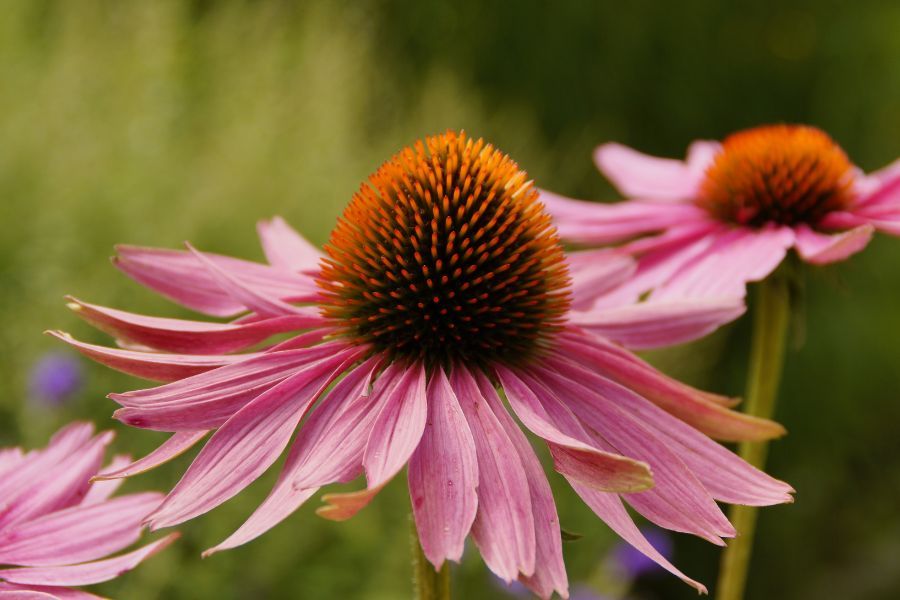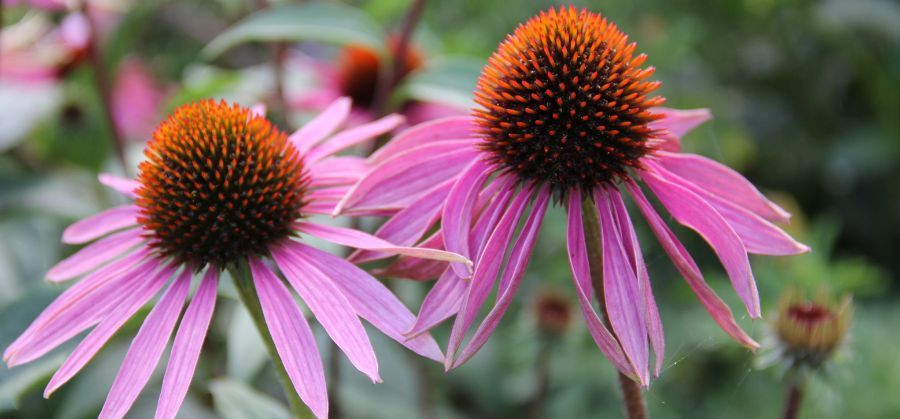Echinacea is one of the most popular herbal supplements in the United States, but what exactly is it? And what are its health benefits?
In this article, we’ll tell you everything you need to know about Echinacea, from how it’s used to the common side effects and possible interactions with other medications you might be taking.
We’ll also discuss how much Echinacea to take and provide links to some of the top products on the market today — so you can get started right away!
What is echinacea?
Echinacea is a flowering plant in the daisy family. Today, echinacea is one of the most popular herbal supplements in the world. It’s commonly used to boost the immune system and treat colds and flu.
Echinacea, sometimes called the coneflower, has been used by Native Americans for hundreds of years as an herbal remedy.
Its ability to boost immune function makes it useful in treating various health conditions, including colds and flu.
Although; it’s not recommended to use echinacea indefinitely or to replace other medications without first consulting your doctor.
But when used appropriately, echinacea can be an effective addition to your medical arsenal.
Echinacea plant description:
The echinacea plant is a flowering herb and is native to North America. It’s also known as the purple coneflower or black Sampson. Echinacea comes from the genus name Echinacea which means hedgehog like because its stem spines look like quills from a hedgehog.
Echinacea is sometimes referred to as purple coneflower because of its deep purple petals and leaves which appear in late summer through fall.
Though there are many species of echinacea, the best known ones come from plants called purpurea and angustifolia.
Both species grow in North America and contain similar properties. If someone would like to grow their own supply of echinacea they need only start it indoors about 8 weeks before last frost date (in early spring) then transplant outdoors when all danger of frost has passed.
Echinacea needs full sun and well drained soil. The entire plant can be used to make an infusion or tincture at home though just the aerial parts are typically sold commercially.
An herbalist will know how much dried material should be boiled in water to create a decoction but an approximate ratio is 1 tablespoon per cup of water.
Health benefits of echinacea:
Echinacea is most commonly used for the common cold and other upper respiratory infections. It has also been found useful in treating conditions such as psoriasis, sinusitis, bronchitis, earaches, sore throats and fever blisters.
It can be taken internally or applied externally as a cream or lotion. There are many different ways you can use echinacea to improve your health so keep reading for more information on this herb’s benefits.
Echinacea should not be used by people who have autoimmune disorders such as lupus or those with HIV/AIDS because it could cause their condition to worsen.
Women who are pregnant should consult their physician before taking any herbal supplements including echinacea.
The safety of echinacea in children under 12 years old has not been established but there is no evidence that it poses any serious risk. Always consult your doctor before giving echinacea to infants or young children.
Side effects of echinacea:

Though echinacea is generally considered safe, it can cause some side effects. These include upset stomach, diarrhea, vomiting, headache, dizziness, and allergic reactions.
If you experience any of these side effects, stop taking echinacea and speak with your doctor.
When using echinacea as a long-term treatment for colds or other infections, do not exceed the recommended dosage without consulting a physician.
Make sure to only purchase supplements that are certified by an independent lab for quality assurance.
Store in a cool, dry place away from sunlight and out of reach of children. Follow the directions on the product label when taking echinacea.
Speak with your doctor before discontinuing use if you have been on it for more than two weeks as this may lead to unpleasant withdrawal symptoms.
How to use echinacea?
Echinacea is most commonly taken orally in the form of a supplement, tincture, or tea. It can also be applied topically as a cream or ointment.
When taking echinacea orally, it’s important to start with a lower dose and increase gradually as needed. The typical adult dose is 300-400 mg per day.
As with any herbal remedy, it’s best to consult with a healthcare professional before taking echinacea, especially if you have a medical condition or are taking other medications.
It’s mainly used to fight off colds and boost immunity. It can be taken orally in pill form or made into an extract, which can be mixed with water or juice.
There are many benefits of using echinacea, but it does have some side effects too. Keep reading to learn more about this plant-based remedy!
Echinacea dosage:
The recommended dosage for echinacea is between 200 and 400 mg per day. It is best taken in divided doses, with the first dose being taken at the onset of symptoms and the second dose being taken eight hours later.
If you are taking echinacea for preventive purposes, it is best to take it in divided doses throughout the day.
The most common side effect of echinacea is mild gastrointestinal upset, which can be alleviated by taking the herb with food.
If you want to purchase echinacea for your medicine cabinet, be sure that you are purchasing a well-known brand of pure echinacea.
Many of these products are tainted with heavy metals and other unwanted compounds. Be sure that any product you buy has been tested for quality control.
How to make echinacea tea:
Echinacea can be found as an ingredient in many cold remedies such as syrups, cough drops, lozenges, and teas.
However, not all products are created equal. For example, some manufacturers may use echinacea extract instead of whole plants which may have less potency.
Make sure you know what you’re buying before purchasing any product containing this herb. If possible, always buy echinacea from your local health food store or co-op.
And make sure it’s organic so you don’t ingest chemicals or pesticides!
To prepare echinacea tea, pour boiling water over dried leaves (2 teaspoons) in a cup or mug.
Steep for 10 minutes and strain. Add honey (if desired). Drink two cups per day until symptoms go away.
As with any medication, speak with your doctor first before taking echinacea. Pregnant women should consult their doctor first before using this supplement.
Be sure to speak with your doctor about alternative treatments for allergies and asthma because research suggests that there might be risks associated with taking echinacea when these conditions are present.
Conclusion
In conclusion, echinacea is a powerful herb with many benefits. It can be used to boost the immune system, fight off infections, and reduce inflammation.
However, it is important to be aware of the potential side effects and drug interactions before taking echinacea.
Be sure to consult with a healthcare professional if you have any questions or concerns.
Related Articles:
- Bacopa monnieri (brahmi): Benefits, uses and side effects
- Dandelion: Benefits, nutrition, side effects, how to use
- Tinospora cordifolia (giloy): Benefits, nutrition and side effects
- Passion Flower (Passiflora Incarnata): Uses, Side Effects, Doses, Interactions and More
- Marshmallow Root (Althaea Officinalis): Benefits, Dosage and Side Effects
